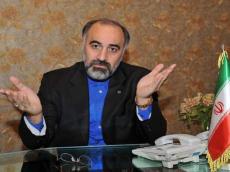Today.Az » Analytics » Nuclear deal’s implementation not to be miracle for Iranian economy
22 December 2015 [17:13] - Today.Az

/By AzerNews/ By Sara Rajabova Closure of case on possible military dimensions of Iran’s nuclear activities has given way to the soonest removal of international sanctions on Iran. Although Iranian officials are waiting for the soonest removal of sanctions that heavily hit the country's economy over the years in January, many in the Islamic Republic and abroad believe that it can take much time to fully lift sanctions. Mohammad Reza Sabzalipour, the president of the World Trade Center Tehran, believes that despite closing the PMD file by the IAEA Board of Governors, the sanctions will remain in place at least until the end of the Iranian year (on March 19, 2016). “No sanctions will be removed until end of current solar year if dollar rate increases up to 40,000 Rials,” he told AzerNews. Currently, the exchange rate for $1 is 29,870 rials. He considered that the Joint Comprehensive Plan of Action signed with the world powers in July will not fade away Iran’s economic problem so soon. “We should note that the nuclear agreement and JCPOA aren’t going to be a miracle for economy of Iran. Nobody should have such imagination and think that nuclear agreement and the JCPOA will solve problems of Iran in the next one or two years and Iran will become a paradise. Majority of problems in the country is related to mismanagement and unwillingness of some in-charges to have hearty and compassionate activities,” Sabzalipour said. Sabzalipour said after the nuclear deal between Iran and P5+1 group of countries, all Iranians including ordinary people, economic activists and even officials and policymakers, ask “what will be the result, which way will we go to, and what lies ahead?” “Ordinary people and economic activists are worried about the future exchange rate of U.S. dollar, because as they have experienced before, by change of foreign exchange rates, price of other goods and services on domestic markets change as a rule. Most importantly, everyone is waiting for the implementation of the JCPOA,” he said. Under the JCPOA, limitations will be put on Iran’s nuclear activities in exchange for, among other things, the removal of all nuclear-related economic and financial bans against the Islamic republic. Iran expects the JCPOA to be implemented in the coming month, enabling the country to trade through international financial systems, receive $100 billion of its frozen assets, and resume oil trade on international markets. Sabzalipour said though the nuclear agreement provides some possibilities for Iran but it do not make a miracle. “Definitely, there is a great gap between reality and what public expect from implementation of the JCPOA and effect of sanctions removal. If we fail to manage this gap properly, the situation can be even worse.” He noted that Iran’s many economic and non-economic problems have no relation to sanctions and therefore, having false optimism may overflow endurance capacity of society. Sabzalipour emphasized the theory “root of economic problems of Iran is summarized only in nuclear issues” is not approved at all, as the country has more serious reasons and barriers. “In general, our economy is inefficient and as long as it remains governmental and mismanagements are governing whether sanctions to be or not to be, there shall be no effect on our situation,” he said. He went on to say that though Iran has taken some activities under the nuclear agreement, no important sanction is suspended and/or removed during the last five months. Speaking about the exchange rate of dollar, he said considering that foreign currencies market had not positive reaction to the nuclear agreement after its conclusion, market had ascending order of rate instead of descending order, leading to insecure situation on market. “Various reasons caused the growth of dollar rate," he said, mentioning the so far effective sanctions, especially limitations in oil trading, redemption of blocked foreign currencies of Iran and excessive decrease of global oil price, high demand for foreign currencies and forced application to free market in absence of foreign exchange center and injection of dollar with high state exchange rate by the Iranian Central Bank in order to compensate budget deficit. So these factors taken together with mismanagement of the Central Bank in fact increased exchange rate of foreign currencies and opened a way for rise of free rate of foreign currencies and decrease of Iranian currency value. “Present Governor of ICB Valiollah Seif received the Central Bank from Mahmoud Bahmani (former governor) in sanctions climax period with dollar exchange rate of 25,000 rials and dollar free exchange rate of 28,500 Rials. But despite conclusion of nuclear agreement and start of implementation of JCPOA, the dollar rate has today increased to 30,090 rials for dollar exchange rate and 36,700 rials for dollar free exchange rate. So, now we have three different exchange rates for dollar instead of unified rate -- a dollar with the rate of 28,500 rials for budget computation, a dollar with a rate of 30,000 rials (for exchange), and a dollar with rate of 36,200 rials (free rate),” Sabzalipour underlined. He stressed that if the things continue in this way, foreign currency rate will keep its slow ascending order and will increase up to 38,000 rials before the current solar year. “In case there evolves a problem in implementation of the JCPOA, which is more likely, dollar exchange rate up will definitely reach 40,000 rials. Concerning global oil market, it is predictable that price for each barrel of oil will descend to $30 due to decrease in global economic growth, especially in China and European Union,” Sabzalipour concluded.
|